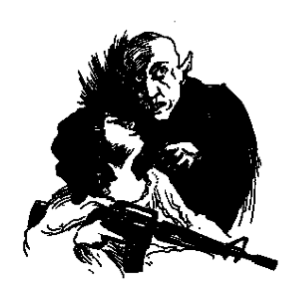As of late, spectacular ironies stroll out of the news two or three times a day; even so, one of the more stupefying of the last year or so has to be this administration’s wholesale destruction of its country’s military, particularly the Army. I’m not talking about casualty rates in Iraq. I’m talking about policies—avoidable policies—that seem so systematically self-defeating that it’s hard not to see these policies as determined to destroy what you might expect the neocons to cherish most—the direct embodiment of America’s imperial might. What should we make of this administration’s nickel-and-dime stonewalling—in an all-volunteer army—on the issue of sufficient body armor? Or Humvee armor? Or wounded veterans’ benefits? Or on pledges to limit tours of duty? Sure, the Marines can be abused and sacrificed without much political cost—those sonsabitches are crazy, as one of the grunts half-admiringly reports in Michael Herr’s Vietnam memoir, Dispatches—but this is the all-volunteer Army. And that rank and file does tend to register its own self-interest.
This May we learned that one year earlier, Lieutenant General John Riggs, veteran of thirty-nine years in the Army and winner of the Distinguished Flying Cross in Vietnam, was booted out with a demotion—he was retired as a major general—for having had the temerity to suggest publicly that American forces in Afghanistan and Iraq were stretched too thin. That kind of demotion for straight talk is more or less unprecedented in the military. (Not getting ahead because of straight talk, of course, is commonplace, but demotion is not.) And the fact that the administration calculated it could get away with such vindictiveness indicates how satisfied it is with its success at having weeded out anyone unwilling to toe the line, no matter how disastrous that line might be. (This process started long ago, of course. Remember General Shinseki, head of the Joint Chiefs of Staff, shitcanned in May 2003 for pointing out what’s since been proven: that the Army’s manpower numbers were far too small to pull off what it was being asked to do in Iraq.) So who’s left in the command structure of the Army at this point, then? The deafening silence of all but retired officers at the treatment of Riggs makes the answer unavoidably clear: only the sycophantic and the cowed. And whom are they going to be ordering around? Who’s going to be doing the heavy lifting? Well, in terms of the all-volunteer Army: this country is already rapidly running out of young men who are so badly informed that they’re willing to sign up for an indefinite stay in a meat grinder. ABC News reported that the...
You have reached your article limit
Sign up for a digital subscription and continue reading all new issues, plus our entire archives, for just $1.50/month.
Already a subscriber? Sign in





